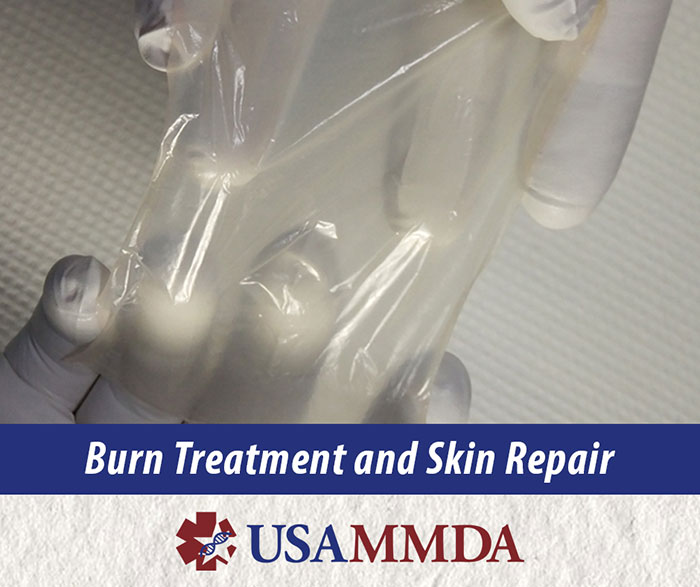USAMMDA's Burn Treatment Innovators Continue Future Treatment Developments, Modernization
A major source of combat-related trauma during the conflicts in Iraq and Afghanistan was Improvised Explosive Devices. Thousands of U.S. service members were injured by IEDs, suffering blast and burn injuries, accounting for more than 80% of burn injuries sustained during combat operations from 2001 to 2018.
Here, on the tails of National Burn Awareness Week, the U.S. Army Medical Materiel Development Activity's Warfighter Expeditionary Medicine and Treatment Project Management Office provides an update about current and ongoing burn treatment initiatives for future use by the Joint Forces.
The U.S. Army is preparing for a Future Operating Environment (FOE) that will be markedly different from the asymmetrical battlefields of Iraq and Afghanistan. That FOE will affect both the number of casualties who suffer burn injuries and the severity of those burn injuries.
Current means of treating burn injuries in theater will not be sufficient to minimize the loss of life from burns caused by advanced weaponry. The Burn Treatment and Skin Repair (BTSR) acquisition program is working to deliver burn treatment solutions that improve the Army's capabilities to manage burn casualties in the FOE.
Burn injuries are complicated and require a variety of interventions, so the BTSR program team is working to field a family of solutions, including an infection prevention and temporizing cover capability; a non-surgical debridement capability to eliminate burned tissue (eschar); and a digital burn assessment capability. These products can be used in modular ways to treat and manage burn patients experiencing a wide range of injuries.
The goals of the BTSR team are to improve front line medical providers' triage and resuscitation capabilities; prevent infection while protecting wounds more effectively; and provide non-surgical options for managing challenging wounds in austere environments as close to the point of injury as possible.
The ability to provide care as close to the point of injury as possible will be critical as casualty numbers increase, and frontline forces face the dual challenges of limited supplies and uncertain medevac timelines.
By providing better-tuned resuscitation, the BTSR products can reduce waste of life-extending fluids. Improving temporary cover products to protect burn wounds would allow them to be left in place longer, extending the time between dressing changes from one to three days with less chance of negative complications. Non-surgical debridement may help to avoid the high resource demands of surgical interventions.
These burn treatment advancements may one day make holistic burn treatment more efficient, while offering more effective interventions than current treatment options.
The BTSR capability will enable some Warfighters to return to duty more rapidly, the goal of all military medicine. Soldiers, Sailors, Airmen and Marines with minor burn injuries – partial thickness burns less than 20% total body surface area – may one day receive treatment without medevac to non-combat areas, returning faster to their units in the operating forces.
As the Army prepares for a more dispersed, more austere, and more challenging FOE, the ability to treat and manage burn wounds in theater will be critical to saving lives, preserving the fighting force, and maximizing the use of limited medical supplies.














